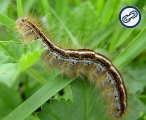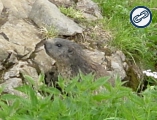|
In the alpine environment, herbivores have to cope with the rather limiting
conditions of their habitat. The relatively low productivity of many
alpine regions allows only rather small populations of herbivores to survive.
Whereas in lowland environments herbivore densities may be controlled by predators, in the alpine
environment the ecology of herbivores seems to be predominantly dependent on environmental
(abiotic) conditions.
The species pool of native herbivores varies widely between the alpine regions of
the world. Many alpine settings support a wide variety of different herbivores, including small
invertebrates like slugs, snails, and caterpillars, small vertebrates like birds and small mammals
as well as large mammals, for example the ibex in the Alps and other European high mountains. Other
regions, for example the alpine zones of New Zealand and Hawaii, had no large herbivores before the
introduction of some species by European settlers. Probably the alpine peaks of certain isolated
islands evolved with almost no herbivores at all.
As diverse as the herbivores in alpine ecosystems are, so also is their impact on
the vegetation. With the help of the pages introducing the different types of herbivores (links in the
images below) you should be able to complete the following table:
|



